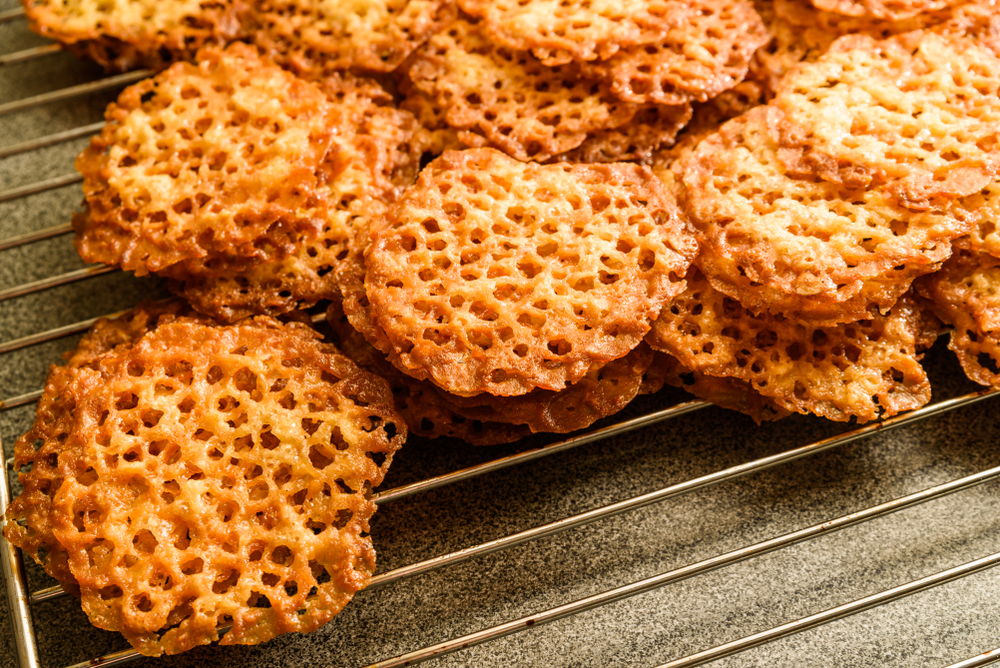These cookies are named for the little lace-like holes that appear as the cookies bake. They may originate in Ireland but their origins are unclear. Oats, however, were grown throughout colonial America, originally for animal feed. It didn’t take long before immigrants began using them to make porridge, pudding, and baked goods such as Scottish and English oat cakes, muffins, and biscuits. In 1877 rolled oats were developed by Henry Seymour and William Heston who established Quaker Mill Company, which later became the Quaker Oats Company. One of the earliest recipes for oatmeal cookies appeared in Mrs. Owens’ Cook Book and Useful Household Hints by Frances Owens in 1884. The lacy oatmeal cookie, which is thinner and crisper than a traditional oatmeal cookie, is celebrated annually on March 18 for National Lacy Oatmeal Cookie Day.
Recipe Servings: 48
Ingredients
- Nonstick cooking spray, as needed
- 1 cup quick cooking oats
- ¼ cup all-purpose flour
- ½ tsp salt
- 1½ tsp baking powder
- 1 cup sugar
- ½ cup butter, softened
- 1 egg
- 1 tsp vanilla extract
Directions
- Preheat the oven to 325°F. Line baking sheets with foil and coat the foil using nonstick cooking spray.
- Combine the oats, flour, salt, and baking powder in a medium bowl.
- Cream together the sugar and butter in a large bowl until fluffy. Beat in the egg and vanilla.
- Add the oats mixture to the butter mixture and stir just until combined.
- Drop batter by the teaspoon onto prepared baking sheets, leaving at least 2 inches between each.
- Bake for 10–12 minutes, watching closely to prevent them from over-baking. The edges should be golden.
- Remove the cookies from the oven and let them cool on the baking sheet for 1 minute before transferring them to the counter to cool completely. Be sure to re-grease the foil with nonstick cooking spray between batches.
Recipe introduction and directions © Copyright 2016-2025 World Trade Press. All rights reserved.


